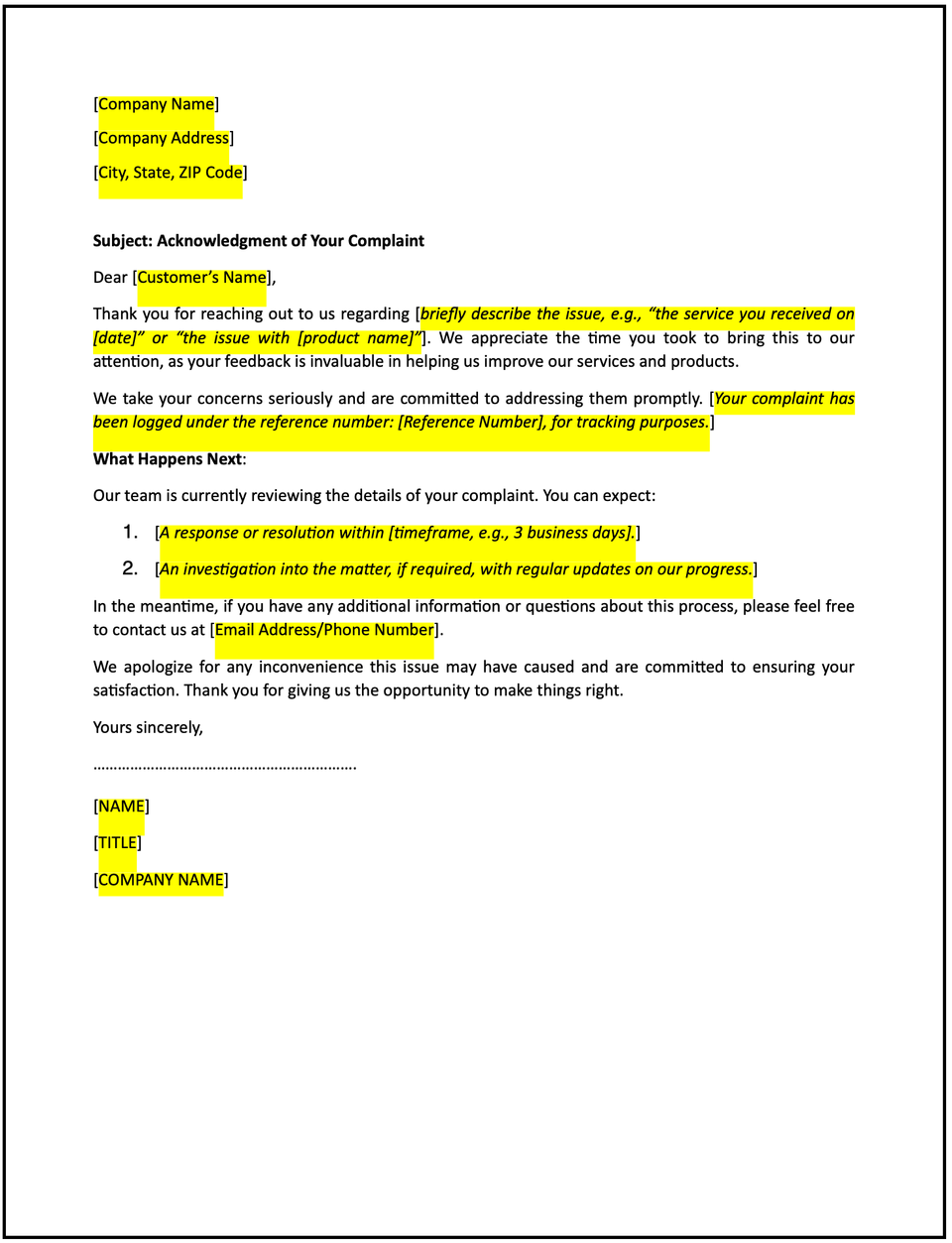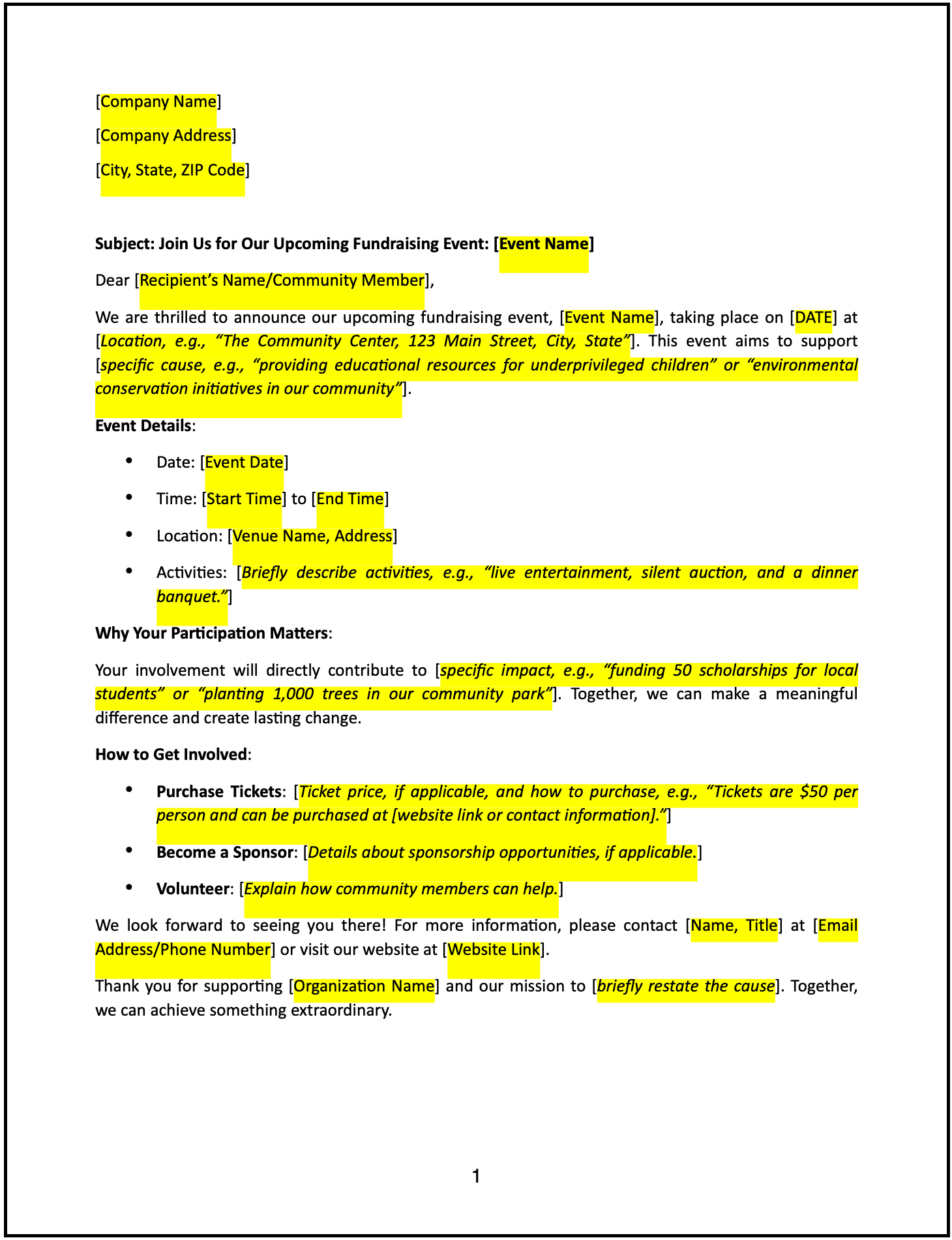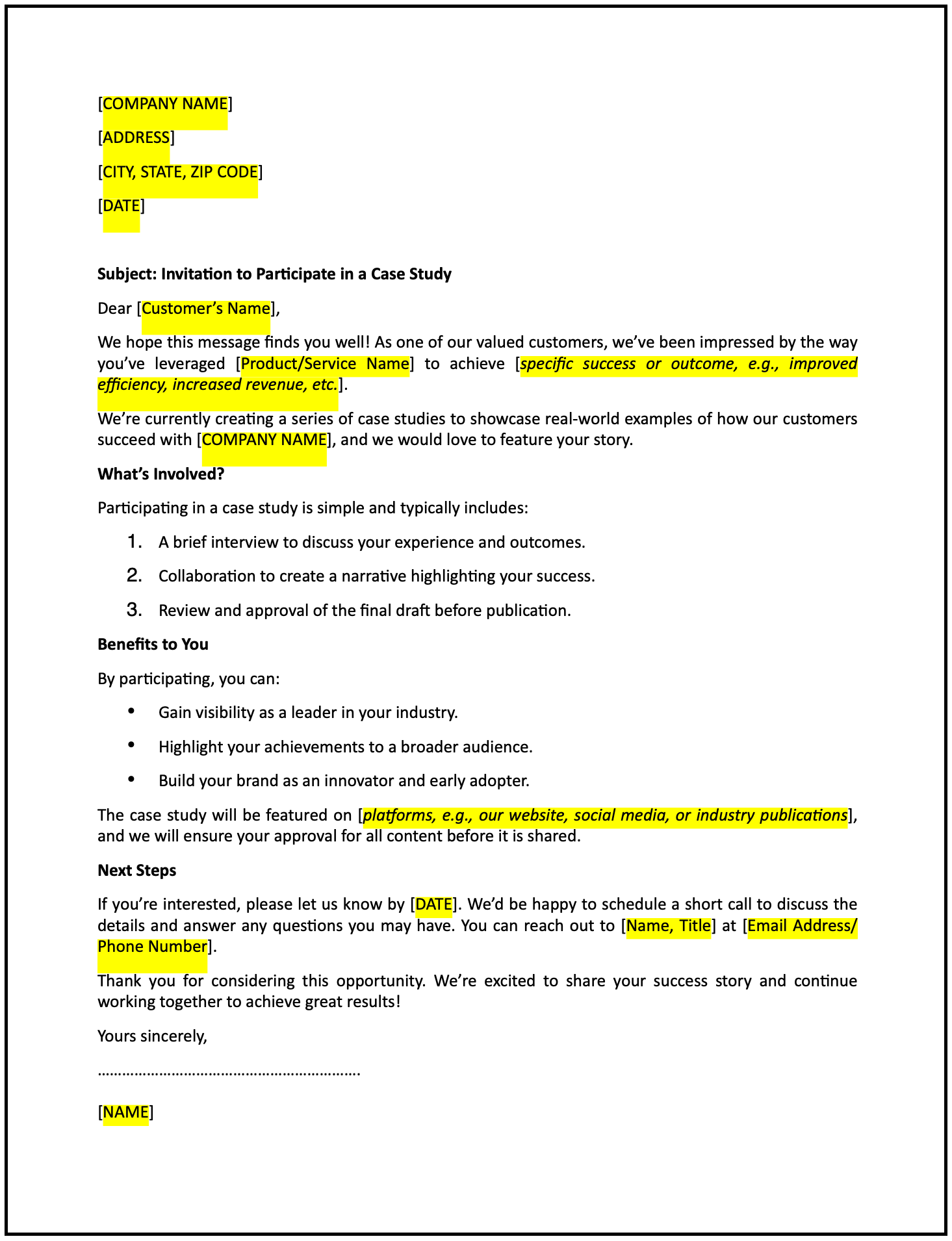Letter acknowledging receipt of a customer complaint: Free template

Letter acknowledging receipt of a customer complaint
Acknowledging a customer complaint promptly demonstrates your commitment to resolving issues and maintaining trust. This letter provides a professional way to confirm receipt of the complaint, outline the next steps, and reassure the customer of your dedication to resolving their concern.
How to use this letter acknowledging receipt of a customer complaint
- Start with gratitude: Open the letter by thanking the customer for bringing the issue to your attention.
- Confirm receipt: Clearly acknowledge receipt of the complaint and specify the date it was received.
- Summarize the issue: Briefly restate the nature of the complaint to demonstrate understanding and attentiveness.
- Explain the next steps: Provide an overview of how the complaint will be handled, including timelines for investigation or resolution.
- Reassure the customer: Emphasize your commitment to resolving the issue promptly and to their satisfaction.
- Maintain a professional tone: Ensure the letter is respectful, empathetic, and solution-focused.
Benefits of using a letter acknowledging receipt of a customer complaint
This letter template ensures a professional and transparent way to acknowledge a complaint while setting the stage for effective resolution. Here’s how it helps:
- Reinforces trust: Prompt acknowledgment demonstrates accountability and responsiveness.
- Provides transparency: Outlining the process shows your dedication to resolving the issue fairly.
- Demonstrates professionalism: A respectful tone ensures the customer feels heard and valued.
- Sets expectations: Explaining the next steps and timelines helps manage customer expectations.
- Maintains customer relationships: A thoughtful acknowledgment fosters goodwill even in challenging situations.
Tips for writing an effective letter acknowledging receipt of a customer complaint
- Be specific: Reference the complaint details, such as the customer’s name, account number, or order information.
- Use professional language: Maintain a respectful and empathetic tone to demonstrate care and attentiveness.
- Outline clear steps: Provide a concise summary of how the complaint will be handled, including timelines.
- Reassure the customer: Emphasize your commitment to resolving the issue and ensuring a positive outcome.
- Keep it concise: Focus on acknowledging the complaint and outlining the next steps without unnecessary detail.
Frequently asked questions (FAQs)
Q: What details should I include in this letter?
A: Include a thank-you message, acknowledgment of the complaint, a summary of the issue, next steps, and timelines for resolution.
Q: Should I apologize in this letter?
A: Yes, if appropriate, a brief and sincere apology shows empathy and understanding of the customer’s frustration.
Q: Who typically receives this letter?
A: Send the letter to the customer who submitted the complaint, ensuring it is personalized and addressed correctly.
Q: How formal should this letter be?
A: The tone should be professional yet empathetic, focusing on demonstrating care and a commitment to resolution.
Q: When should this letter be sent?
A: Send the letter promptly after receiving the complaint to reassure the customer that it is being addressed.
Q: Can this letter include a timeline for resolution?
A: Yes, including a timeline helps set clear expectations and demonstrates your proactive approach.
Q: Is acknowledgment from the customer required?
A: While not required, inviting the customer to confirm details or share additional information can enhance the resolution process.
This article contains general legal information and does not contain legal advice. Cobrief is not a law firm or a substitute for an attorney or law firm. The law is complex and changes often. For legal advice, please ask a lawyer.


